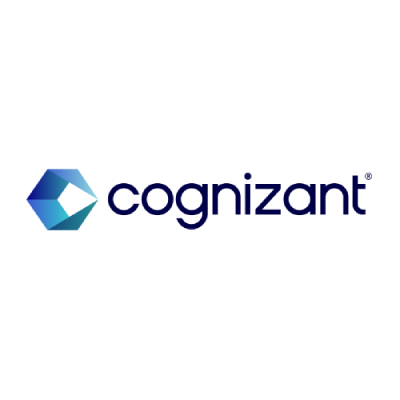When the whole country is your customer, delivering customer experience (CX) is a complex equation. Here, CX50 members from the public sector reveal their approach.
Public sector organisations have unique responsibilities when it comes to CX. People’s interactions with government departments can’t just be designed for a select few loyal patrons; they must be made relevant, accessible, and effective for everyone. The population has no choice but to use these services, but today’s public sector professionals know this is no excuse to deliver poor experiences.
In the third of five categories in this year’s CX50 list, below we reveal the names of 10 CX professionals who are excelling in their field within the public sector, compiled by Marketing Week in partnership with Cognizant and Adobe.
Christine | Bellamy | Director | GOV.UK |
Charlotte | Briscall | Chief Digital Officer | Department for Education |
Rich | Corbridge | Director General, Chief Digital and Information Officer | Department for Work and Pensions |
Laura | Gilbert | Chief Analyst and Director of Data Science | 10 Downing Street |
Rochelle | Gold | Head of User Research | NHS England |
Megan | Lee-Devlin | Director General, Service Transformation | Ministry of Justice |
Mike | Potter | Government Chief Digital Officer | Central Digital and Data Office |
Tom | Read | Chief Executive Officer | Government Digital Service |
Daljit | Rehal | Chief Digital and Information Officer | HM Revenue and Customs |
Joanna | Rowland | Director General, Customer Services Group | Home Office |
Designing CX for everyone
“The most important thing is that people can get what they want at the point of need, that they’re able to access services from government in a way that feels we’re breaking down the barriers,” says Christine Bellamy, Director of GOV.UK, the website that acts as a single access point for government digital services. “It can’t be complex; it must be in a language they understand and in a format that they’re used to. It should feel as good as any commercial product.”
Of course, this is easier said than done, since a vast web of government rules and regulations often create gaps between the experience an individual expects and the one they can receive. As Joanna Rowland, director general of the customer services group at the Home Office, explains: “In the public sector, one of the best benchmarks of our expectation gap is banking. I often share experience with the financial services sector about closing that gap. They have the same regulatory risk and very personalised circumstances.”
While inspired by the continually evolving exemplars of CX provided by commercial brands, public services must also maintain a high level of consistency and simplicity, so departments have to resist the temptation to ‘jazz up’ services unnecessarily.
“[GOV.UK’s] content is written in a way that’s easy for an individual to understand and perform the tasks they need to do,” Bellamy points out. “It’s an open-source pattern that has been used by nations all over the world.”
She agrees, however, that there will be ongoing exploration of additional content formats such as video, noting that “not all users will want that, but the option needs to be there”. YouTube, she explains, is the “biggest search engine in the world for how to do something. We need to make sure GOV.UK is there with its own voice. It’s a very recognised, trusted brand and trust is everything with government.”
“It’s about clarity,” says Rochelle Gold, Head of User Research at NHS England. “There is no point to things being beautiful and appealing if they are not intuitive and people can’t use them. With health, there are three main components: Does it help someone achieve what they need to do? Does it reassure them? And finally, is it clinically safe? It’s not about being slick and shiny.”
Putting usability first
Haroona Irshad-Perricos, though not a member of this year’s CX50, has both an insider’s and an outsider’s perspective of the public sector. Now at NatWest, Irshad-Perricos was one of the architects of the Covid Pass during the pandemic, and says: “We recognised that, as much as we wanted it to be 100% digital, you will have exceptions. When we launched the website, we had BSL there too. We created a Braille version of the pass.”
“Other agencies involved — pharmacies, airlines, overseas border forces — may not have accepted a digital version, so there had to be a paper alternative. You have to have people at the heart of it, whether it’s the end user, the people designing the product, the service design and so on. Otherwise, you could have a beautiful piece of technology that only works for a certain segment of society.”
NHS England’s Gold warns that the temptation to rush towards digital still risks alienating large swathes of society. “Often, the people with the greatest need for healthcare are the people with the greatest barriers to accessing it. Prioritising whose needs should be met, you look at those who are facing barriers to care. We don’t necessarily segment, but we would focus on those groups with the greatest barriers to access.”
Even if the proportion of potentially disenfranchised people were considered small, there is simply no way public sector CX professionals can afford to ‘deselect’ customer segments by not investing in an inclusive experience.
“We must have a product that is for everybody,” GOV.UK’s Bellamy says. “So, we need to make sure we consider everyone when we build it and leave nobody behind. Just excluding 1% would be an enormous number.”
A key element of this is making services easily usable. But there is huge complexity in how government rules — on tax, benefits or immigration, for example — apply to different people in different scenarios, which makes presenting the right information challenging.
“One of the mistakes the public sector often makes, particularly when designing online services, is throwing the kitchen sink at it. Therefore, there is information overload,” the Home Office’s Rowland suggests.
“We have got better at unveiling complexity as it’s needed, not in case it’s needed,” she says, adding that it’s now increasingly important to use conversational AI and machine learning “to understand where common errors happen, and make sure prompts and nudges are targeted to the consumer and not generic”.
Rich Corbridge, Chief Digital Information Officer at the Department for Work and Pensions (DWP), acknowledges that it’s a tricky balance between providing enough information and putting users off.
“There is a thesis that a proportion of what we end up defining as fraud is down to error, because the customer experience is somewhat complicated. We must get as good as we possibly can, offering the best digital customer experience to make it the smoothest journey possible.”
Joining up the citizen experience
While individual departments have made strides in unifying their customer records and providing access to their full range of services, there is always room for more collaboration across the public sector.
Corbridge is impatient for progress here. “I’m a fan of personalising government services, and the DWP, HMRC and Health should really work out — given the appropriate permission — how we can have cross-government personalised services, because the reality is those services are intrinsically linked.”
GOV.UK’s Bellamy suggests there are signs of this cross-government collaboration happening. GDS, the unit within which GOV.UK sits, is also working on a single, secure login for the public to access all government digital services in one place. GOV.UK One Login is already live, with 30 services now available and over 4.1 million people having proved their identity securely. The programme is set to bring on over 140 services by 2025.
When you consider the operational challenges of simply getting a single department to function efficiently within budget constraints, it is understandable that any effort at linking them together is a mammoth undertaking.
“We’re trying to effect change in a very large organisation. We have one of the biggest technology estates in Europe, the biggest IT function in government and we process over £200bn pounds every year,” DWP’s Corbridge reveals. “Trying to do everything we want to do against this is challenging. You must get the structure right, the relationships, and link it all back to outcomes, while making sure it all lands with every one of the almost 5,000 people who work at DWP Digital.”
Breaking down internal siloes to get that well-rounded customer experience is not just a pipe dream. NHS England’s Gold explains that hers is a “department of all the talents”.
“We work in multidisciplinary teams. Each of those people is important in how we deliver good experiences. It starts with user research, but then what is it you do with it – with content designers, interaction, and service design – then tracking the impact of the changes you make? The whole team is responsible for experience, not just designers and user researchers.”
Everyone with any responsibility for CX must get involved in this effort. They also have to understand the goals they’re striving towards and so those goals have to be clear.
For the Home Office’s Rowland, the implication is simple: “It doesn’t matter if you’re the person writing the policy, the developer writing code, or the agent answering the telephone. Everyone is bought into the same target experience.”
“Providing a simple, personalised and inclusive experience for millions of individual citizens is a significant task,” says Yatin Mahandru, VP and Head of Public Sector and Health for Cognizant UK and Ireland. “Public sector CX leaders are putting in the foundation and a lot of hard work to ensure that everyone, no matter their background or ability, can access the services they need in the way they need to. At Cognizant, we feel privileged when we get the opportunity to work with civil service colleagues to design, deliver and advocate for some of the UK Government’s exemplary digital services and leaders at the helm.”
Methodology
The Marketing Week CX50, in partnership with Cognizant and Adobe, is the pre-eminent annual list of the UK’s top 50 CX professionals, now in its sixth year. For 2024, we have taken a new sector-driven approach to compiling the CX50 list, in an effort to better represent the diverse range of customer experiences and priorities present across the economy – particularly increasing its coverage of B2B organisations and the public sector compared to previous years. The CX50 2024 is divided into the following five sectors, each featuring 10 professionals:
- Retail, consumer goods, travel and hospitality
- Financial services
- Public sector
- Manufacturing, logistics, energy and utilities
- Life sciences
Our criteria and methodology for determining the CX50’s members remain the same as in previous years. In order to create a pool of candidates, we combine nominations from Marketing Week and Cognizant’s professional networks with independent measures of brands that perform highly on CX. To select the final list, we then assess individuals’ achievements in the past year and over the course of their careers against the three criteria of impact, innovation and influence.
The CX50 members possess an eclectic set of skills and responsibilities, all crucial in the effort to deliver exceptional customer experience, so while we have not split the CX50 2024 into the five categories we have used previously, these nevertheless remain relevant as descriptions of who the CX50 are and what they embody, namely: organisational leaders, brand guardians, technologists, disruptors/challengers and growth drivers.
Discover more on CX50 here.



















